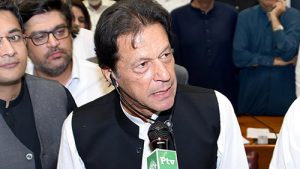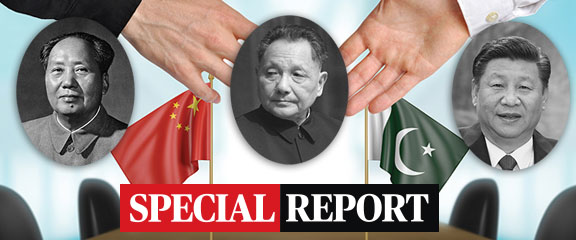With the presentation of the budget, the PTI government has declared its aim to achieve growth and revenue expansion, simultaneously. It is a daring commitment, which it will have to fulfil with meagre financial resources and shrinking financial space. The International Monetary Fund’s (IMF) strict conditionalities and prudent monitoring is another factor, which the government will have to manage to realise its goal. Presently, the IMF does not seem to be in the mood to cooperate with the government, and is hell bent on implementing its conditionalities. The circumstances provide an opportunity to the opposition to play its cards to question, if not to undermine, the government.

In this context, the natural question is, will the government be able to achieve the dual goal of growth and revenue enhancement? Experts are wondering how the government will achieve these goals, as they seem to be mutually exclusive in the present context of Pakistan. They are questioning which economic opportunities the country has, and how it will extract relief in the short term to pave the way for the long term goals of sustainable development. A review of the prevailing economic situation and opportunities suggests that attaining these goals is possible, if the government adopts a smart policy, and develops its assets.
Firstly, agriculture is a sector that has tremendous potential. It can not only provide relief but also has the ability to provide a strong base for the revival of the economy. However, to capitalise on its potential, the government will have to adopt a two-pronged strategy. Initially, it will have to focus on growth of the sector. The major task would be to identify the drivers and actors of growth. The state of agriculture suggests that the drivers of growth would be quality seed, fertilizer, management of the supply chain, establishment of the food processing industry and functional market instruments. The private sector would have to be the leading actor, as the government does not have the required financial resources to invest in the drivers of growth.
Second, for the development objective, the government will have to focus on small and landless farmers. Specialised programmes and tools would be required for small farmers. Additionally, the government can also extract support for small farmers from the private sector through CSR (corporate social responsibility) channels. The private sector can contribute in kind by providing quality inputs.
The growth and development of agriculture will have a spillover effect on economy and society. Growth will ensure quality inputs for major industries of Pakistan including textile, leather and food, and will create massive job opportunities in the short and long run. There will be positive effects on food security. Lastly, development will help to tackle poverty, especially in marginalised areas.
However, to capitalise on the potential for growth and development, the government will have to introduce tailor-made policies and actions. To engage the private sector, a corporate agricultural policy should be launched immediately. The policy must have the requisite ingredients for growth without compromising the development needs of small farmers. The private sector will have to be provided a good business environment. Then, for development purposes, a targeted subsidy must be adopted. Pakistan should abolish the blanket subsidy concept. The subsidy should only be provided to farmers or producers with holdings of less than 12.5 or 25 acres. For growth and development, immediate interventions are also required in supply chain management.
In terms of opportunity, the China-Pakistan Economic Corridor (CPEC) is an excellent opportunity to capitalise on. CPEC has entered its second phase, which is all about industrialisation, agriculture and science and technology. In the short run, growth can be extracted from the construction of Special Economic Zones (SEZs). It is a well-recognised fact that construction has a spillover effect on more than 30 industries. In the medium term, the relocation of industry from China will have multifaceted positive effects on the national economy. In the long term, it will foster the industrialisation process of the country. In all phases of industrialisation, jobs will be created, revenues will be generated, and exports will observe a positive trend. In a nutshell, growth and development will go hand in hand. Second, construction of mega projects like roads and ML-1 will also give a boost to growth in the short term and development in the long term. The construction of two big dams is also underway with the cooperation of China.
Agriculture is another important area of cooperation under CPEC, for the second phase. China has offered to transform the sector through comprehensive cooperation. MoUs of cooperation clearly indicate that it has the ingredients of growth and development. Growth has been identified as low hanging fruit, to give an urgent boost to the economy. For that purpose, the private sector has been marked as the leading actor. China is working hard to bring in the private sector from China, especially in the field of seed, fertilizers, machinery and supply chain. These are all areas where Pakistan is in dire need of cooperation, especially for quality inputs and safe transportation.
The third area of cooperation is science and technology. Pakistan has pinned its hopes on this to capitalise on opportunities from the fourth industrial revolution. Although it is a long term programme, it will help in the short term to produce skilled labour that can also be employed in other productive areas.
However, to realise the potential of CPEC and meet the dual goals of growth and revenue enhancement, the government will have to strengthen the implementation mechanisms of CPEC related projects. The first and foremost required intervention would be to strengthen the CPEC Authority. It is playing a pivotal role to expedite the implementation of the second phase. The government will have to empower the Authority with decision-making and implementation powers. The most important task would be to bring all investment, industry and services related departments under one roof. It is a direly needed intervention, as investors and industrialists want to avoid undesirable delays among all these departments. It is also suggested that the government should establish provincial chapters of the CPEC Authority to smoothen implementation.
Pakistan will have to keep in mind that if it fails to facilitate investors and industrialists, then they have other options. There are more than 138 countries, which have cooperation agreements or MoUs with Belt and Road Initiative (BRI).
In conclusion, the government will also have to tell the IMF, World Bank and other institutions that CPEC does not fall under their area of influence. Besides, the government will also have to tell the USA and Western countries that CPEC is none of their business. It is a bilateral matter and Pakistan needs it to tackle existing economic challenges. However, Pakistan is open to third party cooperation under CPEC. Moreover, all countries are welcomed and encouraged to engage with Pakistan, but without conditionalities.

The writer is a political economist and the author of Understanding of China for Future Cooperation.


